A just published thesis claims that with the help of polymers, plastics, which are already manufactured on a large scale, it is possible to manufacture transistors that are fast and can run on small printed batteries, where the drive voltage is around 1 volt.
Sep 15th, 2011
Read more
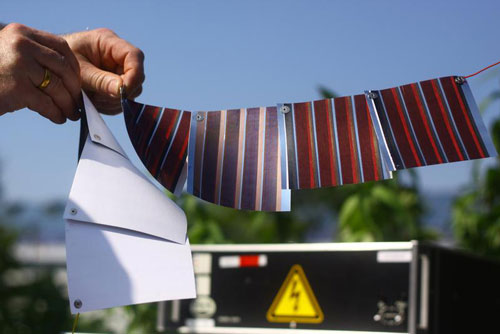 The Institute for Print and Media Technology at Chemnitz University of Technology presents solar panels, which are printed with special inks with electrical properties on standard paper.
The Institute for Print and Media Technology at Chemnitz University of Technology presents solar panels, which are printed with special inks with electrical properties on standard paper.
Sep 15th, 2011
Read more
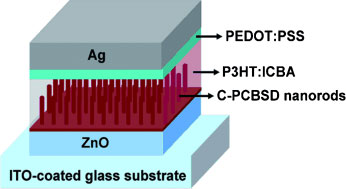 The biggest obstacle to making use of solar energy has been the excessively high price of solar cells made of inorganic semiconductors. In contrast, solar cells based on semiconducting polymers are affordable, light, thin, and flexible - but their performance has been lacking. A team in Taiwan has now developed a new approach that uses fullerene nanorods to significantly increase the effectiveness of polymer-based solar cells.
The biggest obstacle to making use of solar energy has been the excessively high price of solar cells made of inorganic semiconductors. In contrast, solar cells based on semiconducting polymers are affordable, light, thin, and flexible - but their performance has been lacking. A team in Taiwan has now developed a new approach that uses fullerene nanorods to significantly increase the effectiveness of polymer-based solar cells.
Sep 15th, 2011
Read more
Advances in understanding molybdenum nanostructures and molecular mechanisms of catalytic reactions to provide improved natural gas processing technologies.
Sep 15th, 2011
Read more
In a new Friends of the Earth report, leading microbiologists have warned that the rapid rise in household antibacterial products containing nano-silver could put more lives at risk.
Sep 15th, 2011
Read more
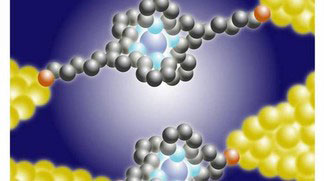 A tunable two-impurity Kondo system in an atomic point contact.
A tunable two-impurity Kondo system in an atomic point contact.
Sep 15th, 2011
Read more
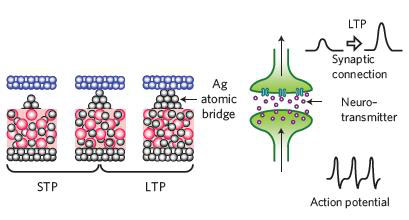 ) In a breakthrough, researchers at the International Center for Materials Nanoarchitectonics (MANA) demonstrate for the first time the key features in the neuroscience and psychology of memory by a AgS2 synapse.
) In a breakthrough, researchers at the International Center for Materials Nanoarchitectonics (MANA) demonstrate for the first time the key features in the neuroscience and psychology of memory by a AgS2 synapse.
Sep 15th, 2011
Read more
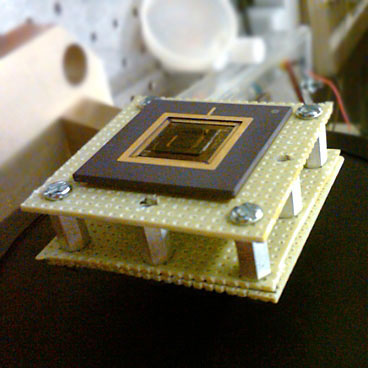 A new MEMS device generates energy from small vibrations.
A new MEMS device generates energy from small vibrations.
Sep 14th, 2011
Read more
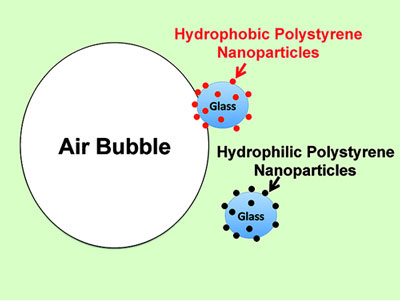 Researchers report discovery of a completely new technology for more efficiently separating gold, silver, copper, and other valuable materials from rock and ore.
Researchers report discovery of a completely new technology for more efficiently separating gold, silver, copper, and other valuable materials from rock and ore.
Sep 14th, 2011
Read more
Brussels (Belgium) will host the largest European Event in Graphene from 10th until 13th of April 2012 at Brussels44Center.
Sep 14th, 2011
Read more
In der Kleinen Anfrage der Fraktion Buendnis 90/Die Gruenen "Aktivitaeten und Positionen der Bundesregierung im Bereich der Chemikalienpolitik auf nationaler und europaeischer Ebene" vom 08.09.2011 beziehen sich 18 der 55 Fragen auf das Thema Nanotechnologie und speziell Nanomaterialien.
Sep 14th, 2011
Read more
The NanoKTN in partnership with the Chemistry Innovation KTN and Nanofactory, has announced details of a one-day seminar where experts in modelling can meet with those seeking to commercialize nanotechnology based products to share their mutual experience and needs.
Sep 14th, 2011
Read more
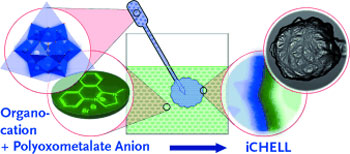 Scientists take first step towards creating 'inorganic life'.
Scientists take first step towards creating 'inorganic life'.
Sep 14th, 2011
Read more
The Technology Strategy Board in partnership with the Engineering and Physical Sciences Research Council (EPSRC) is to invest up to GBP 9m in grant funding to support highly innovative, business led collaborative research projects focussed on nanoscale technology-enabled solutions for the healthcare sector.
Sep 14th, 2011
Read more
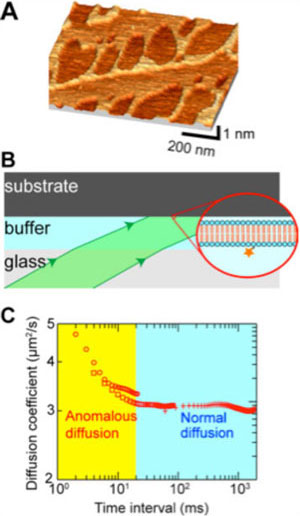 Scientists in Japan have shown that a hierarchic structure with a comparable size in vivo can be introduced into an artificial lipid bilayer membrane using nanostructures on oxide surfaces as templates.
Scientists in Japan have shown that a hierarchic structure with a comparable size in vivo can be introduced into an artificial lipid bilayer membrane using nanostructures on oxide surfaces as templates.
Sep 14th, 2011
Read more
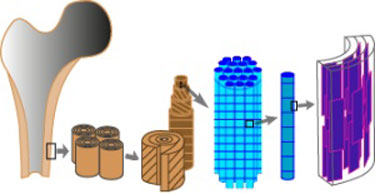 A model that relates multi-level organization and mechanical properties of biomaterials could guide the design of artificial composites.
A model that relates multi-level organization and mechanical properties of biomaterials could guide the design of artificial composites.
Sep 14th, 2011
Read more










 Subscribe to our Nanotechnology News feed
Subscribe to our Nanotechnology News feed